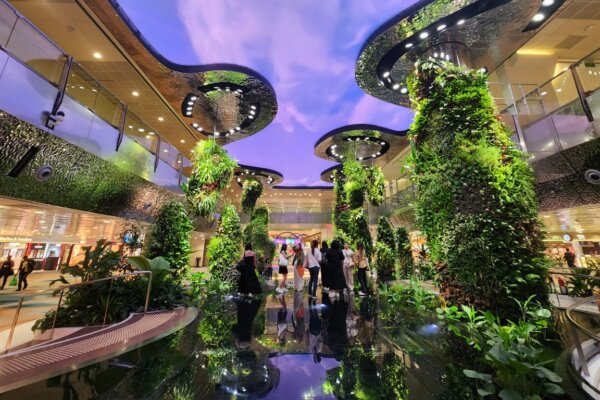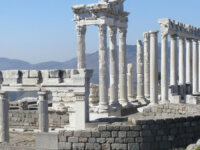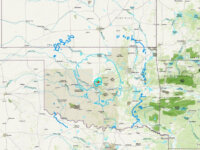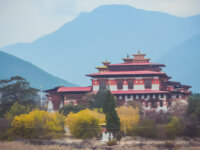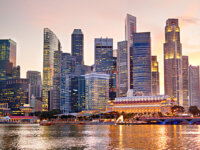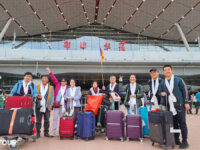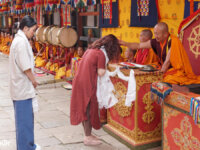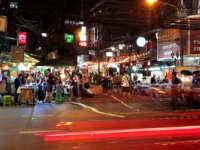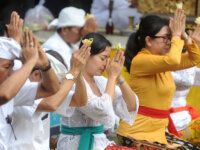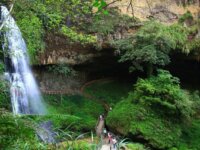Taiwan is an island nation located in the northwestern Pacific Ocean, adjacent to Japan’s Ryukyu Islands and the Philippines. It is the 38th largest island in the world, with an area of approximately 36,000 square kilometers. Taiwan is about 70% mountainous and covered in dense forests. The capital of Taiwan is Taipei, with an estimated population of around 23.5 million people.

Exploring Taiwan – the youthful, dynamic, and modern city of Asia @shutterstock
Taiwan is a small island nation often referred to as Formosa, which means “beautiful island“. Despite being an island, much of Taiwan’s territory is covered in lush green forests and hills. The perfect combination of nature has created fascinating natural landscapes that attract numerous international tourists.
Join Konhar in exploring impressive tourist destinations in Taiwan, a young, civilized, and modern city. It boasts magnificent natural landscapes, including picturesque coastlines, majestic mountains, vast forests, and tranquil lakes and rivers.
Climate and Weather
Taiwan experiences four distinct seasons: spring from March to April, summer from May to September, autumn from October to November, and winter from December to February. Taiwan falls under a subtropical climate region, with an average annual temperature ranging from 25°C to 28°C. Northern typically experiences heavy rainfall from late October to March. The southern part has a hotter climate than the north, with the summer season featuring the southwest monsoon accompanied by rain. Typhoons are common during July, August, and September.
Taiwan has a subtropical climate with four seasons: spring, summer, autumn, and winter. The seasonal transitions are quite distinct, so it’s important to pack accordingly:
- Spring (March to April): Mornings and evenings can be chilly, but daytime temperatures are warm. Nature comes alive with hills, flowers, and trees in full bloom. March can still be quite cool, while April sees temperatures warming up.
- Summer (May to August): The weather is hot and humid, with temperatures ranging from 25°C to 35°C. Frequent rain and typhoons can occur during this season.
- Autumn (September to November): Temperatures range from 22°C to 25°C, with clear skies and pleasant weather. November can have some chilly days reminiscent of winter.
- Winter (December to February): Cooler temperatures below 20°C and occasional light rain.
Taiwan’s weather, especially in northern, is somewhat similar to the weather in northern Vietnam. It’s advisable to check the weather forecast before making travel plans, as Taiwan can experience rainy and typhoon-prone winters. Temperatures can drop to around 10-15°C during the winter, and if you’re lucky, you might even witness snowfall at the foot of the mountains, as was the case in February 2016.

A corner of Taiwan
However, most tourist destinations in Taiwan are at their best on sunny days. If you visit during the spring, particularly around March, you can enjoy cherry blossoms in high mountain areas like Yangmingshan.
Ideal Times to Visit Taiwan
Taiwan has a subtropical climate with high humidity. Summers can be scorching, while winters in high mountainous areas often see snowfall. However, as you move further south, the weather becomes more pleasant. The best times to visit Taiwan are from September to November, when the climate is cool and dry, and from February to April, with dry weather and vibrant blooming flowers. Summer, from June to August, is an ideal time for exploring the east coast, where the sea and sky are beautifully azure, but it’s also the typhoon season.
With just 7 to 10 days, you can explore most of the must-visit places in Taiwan. However, your choice of itinerary may depend on the time and budget you have available. The two largest cities in Taiwan are Taipei and Kaohsiung, and from these cities, you can easily travel to other destinations.
Transportation in Taiwan
With a highly developed public transportation system, you can easily choose the most suitable means of transportation for your journey to explore Taiwan.
Some common modes of transportation in Taiwan include:
- Taipei Metro (Metro Rapid Transit): Operating from 6:00 AM to 12:00 AM, there are 5 lines indicated by 5 different colors, each with clear starting and ending points: Red Line (Tamsui-Xinyi Line), Green Line (Songshan-Xindian Line), Blue Line (Bannan Line), Yellow Line (Zhonghe-Xinlu Line), and Brown Line (Wenhu Line). Ticket prices range from 20TWD to 65TWD (approximately 0,62 USD to 2,01 USD). You can purchase single journey tickets or use the Easy Card for payment.
- Bus: Operating from 5:00 AM to 12:00 AM within the city, ticket prices start at just 10TWD (approximately 0,31 USD), depending on your starting point. You can buy single journey tickets or pay with the Easy Card.
- Taiwan High-Speed Rail (THSR): The THSR is a fast train with speeds of up to 300km/h, saving you time but can be relatively expensive. THSR ticket prices vary depending on the route and seating class, starting from 35 TWD (approximately 1,08 USD).
- Train: Trains in Taiwan can be slower and take longer. There are two types of trains: intercity trains connecting major cities and local trains that stop at many stations along the way. Ticket prices will vary depending on the route.
- Taxi: Yellow taxis are prevalent in major cities. Taxis in Taiwan can be relatively expensive, with a 4km ride in Taipei costing around 130TWD (approximately 4,03 USD). If you have a lot of luggage or travel during nighttime, drivers may charge additional fees.
- Ubike: Bike rentals with different fees depending on the rental duration. Payment can be made using the Easy Card or Visa card:
- Under 4 hours: 10TWD (approximately 0,31 USD) per 30 minutes
- From 4 to 8 hours: 20TWD (approximately 0,62 USD) per 30 minutes
- After 8 hours: 40TWD (approximately 1,24 USD) per 30 minutes.
Note: If you use the Easy Card and start your trip from New Taipei City, the first 30 minutes are free.
- Uber: Suitable for group travel and ride-sharing can save on costs.

Subway in Taiwan
Attractive Tourist Destinations
Attractions in Taipei
Taipei 101
Taipei 101 Tower is one of the iconic symbols and a source of pride for the people of Taiwan. Built over 5 years at a cost of $1.76 billion USD, it was once the tallest skyscraper in the world. With its sky-piercing height and unique architecture, it’s one of the world’s great wonders and a must-visit tourist destination in Taiwan. In addition to admiring the grandeur of the tower, visitors can experience premium services inside the building.
Chiang Kai-shek Memorial Hall
The Chiang Kai-shek Memorial Hall is a majestic landmark that reflects the historical ups and downs. Its unique traditional Chinese architecture attracts tourists who come here to explore the history and magnificent architecture of the structure. Located in a vast square, the memorial is a white-walled building with blue tiles, and inside, there is a statue of Chiang Kai-shek. Visitors can enjoy impressive panoramic views and learn more about Taiwan’s history here.
Ximending Night Market
If you want to enjoy a lively and bustling atmosphere, indulge in shopping, and savor delicious street food, Ximending Night Market is a suitable choice. This vibrant night market in Taiwan is a popular tourist destination, attracting millions of visitors for sightseeing and shopping. Moreover, it’s a great place to find unique and tasty souvenirs for your trip.
Yangmingshan National Park

Yangmingshan National Park. Photo: quietparks.org
Conquering Yangmingshan Mountain is a dream for many adventure and exploration enthusiasts. Along the hiking trail on the mountain’s slope, you’ll encounter picturesque landscapes with lush grasslands and charming wildflowers, making your journey more fascinating. Particularly, when you reach the summit of Yangmingshan, you’ll be rewarded with breathtaking and expansive natural scenery.
Jiufen Village
One of the famous tourist destinations in Taiwan that attracts millions of visitors each year is Jiufen Village, located in the Taipei area. It’s a small ancient village nestled on the mountainside with a single narrow lane. Along this scenic path and amidst the unique surroundings, you’ll find various snacks and souvenirs that will leave a lasting impression on you. Besides sightseeing and capturing photos in the nostalgic settings, don’t forget to savor the famous local delicacies like yuyuan, cao zhi gao, hei tang gao, and yuwan.
Fulong Beach
In a country known as the “Island of Beauty,” its beautiful beaches are must-visit tourist spots in Taiwan. During your trip to Taipei, you should visit the impressive Fulong Beach with its long stretches of white sandy shores and crystal-clear waters. What’s more fascinating about Fulong Beach are its light yellow quartz sand beaches, creating a delightful texture when touched. Moreover, this beach frequently hosts sand sculpture festivals, where artists create stunning, lifelike sculptures. At Fulong Beach, you can also enjoy various exciting activities like rowing, surfing, and water sports, with admission to the amusement area costing around 100 TWD (~ 3,10 USD).
Yehliu Geopark
Yehliu Geopark, also known as Yehliu GeoPark, is considered an ideal tourist destination in Taiwan for nature and geology enthusiasts. Here, you’ll have the opportunity to admire the natural artistry of the unique rock formations shaped by sea winds and tides. To reach Yehliu, you should visit Taipei first and then take a taxi or bus for approximately 41 kilometers to get there. The name “Yehliu” is derived from the Spanish “Punto Diablos,” meaning Devil’s Cape. Yehliu GeoPark stretches over 1.7 kilometers, with the widest land part measuring over 300 meters.
Tourist Destinations in Taichung
Sun Moon Lake
A well-known attraction in Taichung is Sun Moon Lake, the largest freshwater lake in Taiwan, located at an elevation of over 760 meters. The scenery here is serene and offers a space for a relaxing vacation. Moreover, you can also enjoy various activities at Sun Moon Lake, such as hiking, cycling, and boating.
Taroko National Park

Taroko National Park. Photo: thelostpassport
Taroko National Park is nestled within the Taroko Gorge, stretching from Taichung through Nantou and all the way to Hualien, covering an enormous area of up to 1 million square kilometers. When you visit, you will be truly amazed by the grandeur of the towering mountains, harmoniously blending with nature.
This famous tourist destination in Taiwan boasts treacherous peaks, lush green forests, magnificent waterfalls, and untouched, wild beauty, making it ideal for travelers who love exploring impressive natural beauty.
Wenwu Temple
Wenwu Temple, dedicated to Guan Gong and Confucius, is located in Taichung, near Sun Moon Lake. This temple is built in the distinctive architectural style of northern Chinese temples. With its vast scale, visitors will be awestruck by its grandeur and impressive decorations and sculptures. When you visit, you’ll feel like you’ve entered a heavenly realm, a place of tranquility and serenity, allowing you to shed away life’s worries and concerns.
Cingjing Farm
Cingjing Farm in Taichung is also one of the popular tourist destinations in Taiwan, attracting many visitors. Cingjing Farm is situated on a vast plateau, covered with straight and lush green grasslands. Just breathing in the air here will make you feel more at peace. Additionally, you’ll have the opportunity to admire adorable sheep frolicking in the grass fields, an image that tourists won’t easily forget.

Cingjing Farm
Furthermore, Cingjing Farm is often referred to as the “Switzerland of Taiwan” due to its high elevation of over 1700 meters above sea level. This results in an incredibly fresh, cool, and pleasant climate. Moreover, you can witness a sheep-shearing performance conducted by the farm’s staff. If you have more time to stay, you can also savor delicious and fresh bamboo shoot and corn soup, a delightful culinary experience.
Tourist Destinations in Southern Taiwan
Qigu Salt Mountain
The next tourist destination in Taiwan is located in the southern region, known as Qigu Salt Mountain. This famous location contributes to over 60% of Taiwan’s total salt production. While it’s a bit far from the city center, taking about a 2-hour bus ride, Qigu is an extraordinary place worth experiencing.
Covering an area of over 2 hectares, it resembles a snowy white landscape due to the vast expanse of salt. Salt Mountain has built steps for visitors to easily climb to the top for sightseeing and unique photo opportunities.
Confucius Temple – Fuzhong Old Street
The Confucius Temple is a place of worship for Confucius and his disciples. To the left of the temple is a national school, with the “Path of Righteousness” and “Great Success” halls on the east and west sides. Despite being located in the city center, passing through the temple’s gates, you’ll feel the solemn and peaceful atmosphere.
Fort Zeelandia – Anping Fort
Fort Zeelandia, also known as Anping Fort, is a historical structure built by the Dutch in the 17th century. The outer fortifications are constructed from ancient red bricks, giving it a sturdy appearance. Inside the fort, you can find a statue of Admiral Cheng Cheng-kung, who reclaimed Taiwan from Dutch rule. The fort also houses various historical artifacts and information about Southern Taiwan’s history. This is a great place for travelers interested in learning about history.
Cijin Island
Cijin Island in Kaohsiung is a popular destination for both foreign and local tourists. It offers impressive coastal landscapes and is renowned for its delicious seafood that will tempt your taste buds.
Here, you can participate in activities such as kite flying, visit the windmill park, explore Cihou Lighthouse, and visit the nearby Anping Fort.
Fo Guang Shan
One of the famous spiritual tourist destinations in Kaohsiung is Fo Guang Shan, often referred to as the “Buddhist capital,” which attracts a large number of visitors. Fo Guang Shan covers an area of over 100 hectares and houses hundreds of statues, along with numerous grand temples and pagodas.

Fo Guang Shan
From the moment you enter, you’ll be impressed by the grandeur and magnificence of this complex, with many unique statues, eight 88-meter-tall pagodas lining both sides of a stone path, surrounded by lush greenery and vibrant flowers. The tallest statue here is the “Great Buddha” at 108 meters, making it the tallest Buddha statue in the world.
Lotus Pond
Lotus Pond, also known as Daming Lake, is a must-visit tourist destination in Taiwan that transports you to a fairy-tale world with its stunning aquatic landscape. This artificial lake features 20 temples surrounding it, adorned with impressive dragon and tiger statues at the entrance.
Spring and Autumn Pavilions
Spring and Autumn Pavilions, also called “Spring and Autumn Royal Pavilion”, got its name from the Spring Pavilion and Autumn Pavilion, is another impressive tourist destination in Kaohsiung. It is a landmark that commemorates the martial saint, Lord Kuan. Like the Dragon and Tiger Pagodas, the temple is special and unique. It was built in 1953 by Chi Ming palace, were two Chinese palace-style pavilions. The complex can be seen from the top of the Dragon and Tiger Pagodas.
Spring and Autumn Pavilions is famous for its unique architecture, and the beauty of the structure has been well-preserved to this day. Additionally, its location right on the serene lakefront has attracted many tourists. After visiting Lotus Pond, you can easily make your way to Spring and Autumn Pavilions.
Unique culinary culture
Taiwanese culinary culture is considered a unique blend of traditional Chinese culture and the modern influences of Western cuisine. Taiwan not only attracts tourists from around the world with its unique tourist destinations but also with its cuisine that is hard to find anywhere else in the world today.
Taiwanese natives, such as the Hoklo people (Taiwanese), indigenous peoples, and Hakka people, each have their unique dishes. Other regions are influenced by culinary traditions from mainland China and Japan. The most significant culinary influence in Taiwan comes from southern Chinese cuisine, especially from Fujian Province. Additionally, Taiwanese cuisine draws inspiration from Guangdong, Jiangxi, Shanghai, Hubei, Sichuan, and Beijing cuisines.
In Taiwan, wherever you go, you’ll easily come across numerous eateries, and the night markets bustling with food stalls. Spending just a few days in Taiwan would make it challenging to taste all the unique dishes this place has to offer. However, sampling a few standout dishes that are beloved by many is enough to leave a lasting impression.
Taiwanese Bubble Tea
For bubble tea enthusiasts, Taiwan is the ultimate destination. It’s often referred to as the bubble tea paradise, featuring a variety of famous brands such as Gongcha, Ten Ren, Green Tea Latte, and more. The Taiwanese bubble tea boasts the authentic flavors of tea paired harmoniously with the creamy richness of milk and chewy tapioca pearls. Trying bubble tea in Taiwan is a must for any traveler, as it’s considered an essential part of the Taiwan experience.
Yongkang Beef Noodle Soup
Another must-try when visiting Taiwan is the famous beef noodle soup. This dish is renowned for its chewy, fresh noodles, rich broth, and tender beef slices. Just looking at it, you can’t help but appreciate the culinary finesse that goes into making this dish, which is often regarded as one of Taiwan’s signature dishes. Beef noodle soup is a quintessential Taiwanese dish and has its origins in Taiwan.

Many Taiwanese tourists share that the beef noodles here have a special, unforgettable taste.
In Taipei, you can find the world’s most expensive bowl of beef noodle soup. Finding a place to enjoy this dish in Taiwan is quite simple, as there are eateries serving it on nearly every corner, each with its unique recipe. If you visit Taiwan, don’t miss the chance to savor this iconic beef noodle soup.
Stinky Tofu
Stinky tofu, or “tofu with a special aroma,” is another famous dish in Taiwanese culinary culture. Due to its unique smell, not everyone dares to try it, but those who do often find it delicious. The distinctive odor of stinky tofu results from the fermentation process used in its preparation.

Barbecue stinky Tofu is most popular Taiwanese traditional snack
Pineapple Cakes
Pineapple cakes are an integral part of Taiwanese culinary culture. To fully savor their flavor, they are typically enjoyed with a cup of tea. You can find pineapple cakes everywhere in Taiwan, from convenience stores to production facilities and even at the airport. They also make for great souvenirs to bring back for your loved ones when traveling to Taiwan. One of the most renowned brands is Sunny Hills, which is a top choice among buyers.

If you don’t know what specialty to buy as a gift for your loved ones, pineapple cake is a suggestion not to be missed
Iron Eggs
Iron eggs, also known as quail eggs or duck eggs, are a famous Taiwanese snack found in eateries and on the streets throughout the island. They are typically prepared by simmering the eggs in a flavorful sauce with various spices until they become dark and savory. These “iron” eggs get their name because of their hardened texture after cooking. Once you try them, you’ll remember the unique taste of these snacks.
Baozi (Steamed Buns)
Steamed buns, known as baozi, can be found everywhere in Taiwan and are a staple of Taiwanese culinary culture. There are various types of baozi, including fried baozi, steamed baozi, and boiled baozi. Taiwanese people love these buns, and they are a popular choice among tourists as well. What sets them apart is the choice of sauce and seasoning, with a touch of soy sauce and other spices adding depth to the flavor.
Oyster Omelette
Another dish to add to your list of must-try Taiwanese foods is oyster omelette. This dish combines ingredients such as eggs, oysters, and sweet potatoes to create a delicious, savory flavor with a slightly crispy texture. A unique sauce is often drizzled over the omelette, making it even more enticing.
Din Tai Fung’s Soup Dumplings
Soup dumplings, known as xiaolongbao or siumai, are a delightful and unique Taiwanese dish. These dumplings feature a soft outer shell enveloping a flavorful meat filling, along with a savory broth. When eating them, be careful with the hot soup inside the dumplings.
Coffin Bread
Taiwanese cuisine doesn’t just offer a diverse range of flavors but also unique shapes and forms that intrigue diners. One prime example is “coffin bread,” which draws attention due to its distinctive coffin-like appearance. It consists of a box made from thick toast filled with a mixture of ingredients like seafood, mushrooms, corn, and more. The unusual shape gives it its intriguing name, “coffin bread.”
In conclusion, Taiwanese culinary culture is a rich and diverse tapestry of flavors and traditions. Exploring the unique and delicious dishes in Taiwan is an essential part of experiencing the country’s vibrant culture and hospitality.”
Is a visa required for traveling to Taiwan?
In reality, the visa requirements for traveling to Taiwan can vary depending on your nationality and the purpose of your trip.
- For U.S. citizens: U.S. citizens typically can travel to Taiwan for a maximum of 90 days without a visa, depending on the purpose of their visit (tourism, business, study, etc.). However, this can change, and it’s advisable to check the website of the Taiwan Ministry of Foreign Affairs or the Taiwan Economic and Cultural Representative Office in the United States for specific and up-to-date information.
- For citizens of other countries: Citizens from other countries also need to check the visa requirements for Taiwan based on their nationality and the purpose of their trip. Some countries may be eligible for visa exemptions for a certain period, while others may need to apply for a visa before traveling to Taiwan.
Please consider contacting the Taiwan Embassy or Consulate in your country or checking their official website for specific and current information on visa requirements.
Which language is used for communication?
The official and most widely spoken language in Taiwan is Mandarin Chinese (also known as Chinese). This means that most people in Taiwan can understand and speak Chinese. However, in addition to Chinese, many residents of Taiwan also have some knowledge of English, especially in major tourist areas and city centers.
Furthermore, Taiwanese Hokkien (Min Nan), a variety of Hokkien Chinese, is also commonly used in Taiwan, especially in daily life and communication within local Taiwanese communities.
If you do not speak Chinese or Taiwanese, using English can help you communicate more effectively, especially at major tourist destinations and when dealing with tourism services. However, it’s a good idea to prepare some basic phrases in Chinese or use translation apps in case you need assistance.
Exchange Currency Before Traveling to Taiwan
Travelers should exchange currency before going to Taiwan for convenience during transportation and shopping. Here are some things to consider when exchanging money for use while traveling in Taiwan:
- Taiwanese Currency (TWD): The primary currency is the New Taiwan Dollar (TWD). Make sure you exchange enough local currency to cover your expenses during your trip.
- Banks and Currency Exchange Sources: It’s advisable to visit banks or currency exchange counters at airports or major shopping centers to exchange money. Avoid exchanging money at untrustworthy or unofficial exchange places to prevent the risk of counterfeit currency.
- Credit Cards and Cashless Transactions: Taiwan accepts international credit cards at most locations, allowing you to make payments at many stores, restaurants, and hotels. This reduces the need to carry large amounts of cash and enhances transaction security.
- ATMs: Taiwan has numerous ATMs that accept international cards, enabling you to withdraw cash at favorable exchange rates. However, check with your bank regarding any fees associated with international ATM transactions.
- Cash Reserve: Always keep a small amount of New Taiwan Dollars in cash on hand for emergencies, especially when visiting less developed or remote areas.
Be sure to check exchange rates and related information before your trip to ensure the best preparation for your journey.
What to Buy When Traveling to Taiwan?
You can consider buying the following items when traveling to Taiwan:
- Rice Wine: This is a traditional rice wine made from glutinous rice, with a distinctive flavor. If you want to give a gift to family or friends, rice wine is an excellent choice.
- Unique Teas: Taiwan is renowned for unique teas such as high-mountain Oolong tea, black tea, and green tea. You can purchase these teas as gifts for loved ones or friends.
- Pineapple Cakes: Pineapple cakes are a traditional Taiwanese snack made from flour, sugar, and pineapple. They have a sweet, delectable flavor and are often packaged in gift boxes.
- Handcrafted Items: Taiwan offers a wide range of beautifully crafted items such as tea sets, ceramic dishes, Buddha statues, and traditional artwork. These make meaningful gifts for your loved ones or friends.
- Sheet Masks: Sheet masks are a popular beauty product in Taiwan. They are made from natural ingredients like seaweed, fruit, and vegetables. If you’re looking for gifts for beauty enthusiasts, consider selecting a variety of sheet masks.
Travel Tips for Taiwan
- Streets are often crowded, with a lot of people coming and going. It’s important not to keep all your important belongings in one place, including personal identification, money, and your phone. Be cautious and keep these items secure to avoid theft.
- When you arrive at the airport, consider purchasing a SIM card from local telecom providers for convenience in communication and internet access while navigating, checking news, and staying connected.
- The standard power outlets are Type B, so it’s a good idea to bring a power adapter to charge your electronic devices before traveling.
- Avoid smoking or littering in public places, especially in areas with no-smoking signs, as Taiwan enforces strict rules and you may be fined for violating these regulations.
- Remember to adjust your watch or phone to the local time for convenience in daily activities and sightseeing.
- If you intend to purchase medicine, jewelry, gemstones, or valuable items, make sure to inspect them carefully to avoid buying counterfeit goods.
- The goods here are very diverse and abundant, and there is a significant price difference between supermarkets and local markets. When shopping, it’s advisable to choose carefully because prices are often quoted higher than their actual value.
These are some of the most detailed travel tips for Taiwan that you can consider for your trip. Hopefully, these insights will prove to be useful in ensuring you have a wonderful and happy journey with your loved ones.



